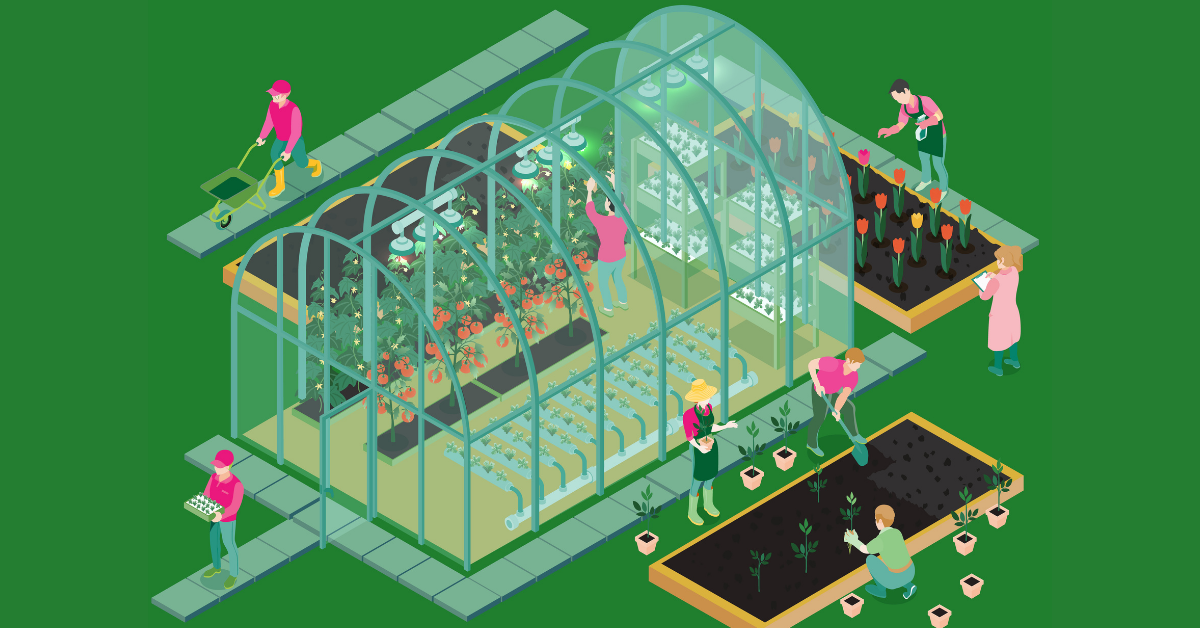The single most important transformation in any founder’s approach to building profitable models is to move to ‘sustainability’ from ‘scale-at-any-cost’
To be sustainable and not necessarily depend on the next round of funding for survival and growth, supply chain models need to evolve beyond GMV
Current GM and the ability to add at least 50 to 100 basis points to GM in 5 to 7 years, could become an overriding investment criterion for many investors
Indian agritech took its root about a decade back. The first five to seven years saw first-mover startups such as CropIn, AgroStar, BigHaat, S4S Technologies, Innoterra, DeHaat, Promethean, and Unnati trying to integrate technology into various facets of the Indian agricultural supply chain. It was a phase of evangelisation, experimentation and explorations, with entrepreneurs figuring out a business model centred around technology.
The year 2017 was an inflexion point in the Indian agritech space. It was largely driven by the entry of an army of entrepreneurs building tech-enabled models. They aimed to solve for farmers’ access to market, credit, inputs, data and advisory.
Several startups such as Samunnati, SatSure, Ninjacart, WayCool, FarMart, and Jai Kisan, among others demonstrated the adoption of innovative products and services. This adoption was done across the value chain from farmers to traders to FPOs (Farmer Producer Organisations). This phase also saw banks, NBFCs and corporates partner with some of the agritechs.
Agritech’s Pivot To Agri-Fintech, Consolidation & More
Phase two featured agritech startups pivoting to agri-fintech models. This move was supported by increasing participation from banks and NBFCs to build digital models of lending. As a result, agri-fintechs like Dvara E-Registry and Grey Matter Technologies emerged with a focus on farmer financing.
Additionally, there was an emergence of tech models in ancillary value chains. The fisheries space saw startups such as Numer8 and FreshR sprout up. ReshaMandi is a supply chain management platform that focused on the silk industry. Startups such as Milklane, Mooofarm and Dvara E-Dairy sprang up in the dairy space. Other examples include poultry (Eggoz), storage and logistics (Inficold, Agrigator, Tusker Transport), and international trade (Maalexi, OriginKonnect) among others.
The space also startups focused on specialised value chains such as staples (SuperZop), spices (Parvata Foods, Krishikan, Krishi Sahyog), vegetables and fruits (Agrowave), onions (GFresh Agrotech), bananas (Greenikk, Oxecart) among others.
Further, there was also a bit of consolidation with the likes of Kamatan Farm Tech, FarmGuide, SV Agri, Helicrofter, InI Farms, and CropTrails getting acquired by other startups. Indian startups started to go international, setting up offices in Europe, the Middle East, and South-East Asia. Some entered global markets through acquisition. For instance, SatSure’s acquisition of Old City Innovations helped expand its footprints in the US market.
The continued government support and growing investor interest during this phase contributed to making the Indian agritech mainstream. The scale demonstrated by startups proved that agritech is an integral part of the agriculture supply chain in times to come. Accelerated digital adoption among farmers during the pandemic resulted in many agritechs demonstrating a high GMV (gross merchandise value) growth. This translated to a growth in the range of 2x to 4x year-on-year (YoY) between 2019 and 2022. This growth was fuelled by venture capital investment of over $2 Bn in this period.
Another noteworthy trend of this phase was the development of captive agritech platforms by agri-corporates and SMEs. A few examples include the development of nurture.farm by UPL, MAARS by ITC, SAF GREEN app by Suri AgroFresh, Xarvio by BASF, and Farmer Connect app by Corteva, among others. The key driver behind building these digital platforms is to enable direct farmer connect to drive scale, efficiency and service model in their businesses.
Collaboration Amongst Startups And Corporates Is The Key
The intersection of agribusinesses and agritech is something to watch out for in times to come. There are many instances of corporates partnering with startups to jointly build, customise and propagate digital models. At the same time, I see fault lines with many neo agritech platforms coming from agribusinesses which may compete with startups’ digital platforms.
Unlike startups, corporates are in no rush to drive scale in shorter timeframes. This means that they have the luxury of time to build tech models at their own pace. Another friction point is the quest for talent as professionals are jumping the ship from corporates to startups and vice versa.
It’s quite evident that elephants (the corporates) want to acquire the shades of agility that the cheetahs (startups) offer while cheetahs are looking to stabilise and grow to the size of elephants. Having said that, there is mutual respect for each other strengths amongst them. Both corporates and startups realise the merits of collaboration in growing the agritech market together rather than fighting for market share.
Indian Agritech Phase 3.0: What Lies Ahead?
What lies ahead for startups in the post-pandemic era? As we enter the third phase, estimated to last for the next 5 to 7 years, I am confident that the number of agritech startups will continue to grow. My projections put the number at over 10K in the next few years. This figure is supported by the colossal size of opportunity with proof of concepts in place. However, I also see a few fundamental shifts in the way the space will behave and evolve in this phase, as depicted in the fifteen trends below:
- Farmer adoption of agritech solutions will inch up from less than 10% to over 50%. Increasing digital adoption and access to curated content and personalised advisory will help farmers discover quality inputs, get access to more buyers and yield higher prices for their produce. High data speed access through optical fibres, 4G, and 5G in rural areas along with smartphone ownership will catalyse this transformation, sooner than most of us expect.
Digital tools combined with video, and vernacular voice, farmer-friendly UI (user interface), UX (user experience) and social media integration can drive adoption faster. It’s time we start building rural-centric chatbots, voice bots and video bots, which are capable of addressing at least 80-90% of farmer queries without manual intervention. Rural or farming bots is a multi-billion opportunity in waiting, which some startup is going to crack sooner or later.
- The underpenetrated segments in Indian agritech such as agri biotech, deeptech, processing tech, infra-tech, and drone tech will soon gain momentum. This will be backed by several agritech platforms as GTM partners with the demand coming from corporates and FPOs.
- Agritechs with phygital models will emerge as channel partners (business correspondents) for banks. This would enable easy credit access to farmers through services such as onboarding, KYC, credit scoring, risk assessment, mitigation and loan recovery. The pivot to agri-fintech will open up new avenues of monetisation for agri startups which can also potentially reduce banks’ dependence on branch banking for Public Sector Lending (PSL).
Building a digital wrapper for credit facilitation in partnership with banks can fast track the development of agri-fintech tools. Yes Bank’s Agri Infinity programme is one such initiative. There are about 60-80 Mn farmers with no access to institutional credit. This is the population that will benefit the most from this process with interest costs coming down from more than 24% to less than 10% per annum.
- Parametric insurance products, especially the ones linked to weather, where the data is standardised and usually non-disputable, will find more acceptance. The penetration of insuretech products, both farm and non-farm, in rural areas calls for a concerted approach between reinsurers, insurance companies and insuretech startups.
- Ancillary industries including dairy, fishery, aqua, poultry, beekeeping, fibre, and sericulture will see many new startups sprouting up. They will take this opportunity to deploy technology to integrate fragmented supply chains and build D2C/B2C/B2B models and launch their brands.
- In order to leverage their last-mile connect, agritech, fintech and rural tech sectors might see a fusion and blurring of boundaries. This will enable them to sell a wider variety of products and services with very little incremental cost and effort, through village-level entrepreneurs.
For instance, the partnership between Frontier Markets and HESA Global aimed to provide 1 Mn rural households with access to products, health services, and information to build COVID-19 resilience.
- Drone applications in agriculture are likely to gain even more momentum in the coming few years. The significant policy push witnessed in the last few months, especially the government’s guidelines on SOPs for agrochemical spray and Kisan Drone schemes will help bolster this sector. It is yet to be seen whether agrochemical players will build a drone-service model or independent drone players will emerge. In the near term, it could be a mix of both.
We are already seeing the emergence of agri drone ecosystem with startups like IoTechWorld, Garuda, and DroneAcharya providing agrochemical spraying services. Agri input companies like IFFCO, UPL, Dhanuka, Bayer, and DCM Shriram, among others, have started piloting spray with drones.
Drone surveillance and data collection could be another application for the purpose of pest detection (as demonstrated by BharatRohan), insurance settlement, and recording mutation in land boundaries, among others. Financing models and incentives for drone manufacturing (such as under the PLI scheme), farmer financing for drone purchase along with drone academies to train rural youth is the need of the hour to leapfrog the agri-drone ecosystem to the next level.
Deep engagement and partnership between startups and farmer/farmer groups will be key to building these farmer-driven brands. The brand, Ekyaam, known for its Alphonsos, is an example of a farmer-driven brand depicting the farmers from the Konkan region. Mango Dairies is another such initiative from the farmers in the Pilibhit region.
- The proprietariness of the captive data stacks created by hundreds of agritech startups will get diluted with the availability of publicly available, curated and authenticated datasets. Hence, the ability to create APIs and analytics engines would become the sole differentiating value proposition for many data-centric startups.
- Government support in the form of incubation, facilitation and digitisation (through Agristack and other digital tools) at the federal and state levels will continue to drive more innovations.
MP Kisan app developed by the Madhya Pradesh government is a great example of how government imitative can help farmers. Farmers in the state use the MP Kisan app to get a certified copy of their Khasra, Khatoni, self-certification of the sown crop, receive advisories issued by the government and link their own Khatas through Aadhar Number. It’s clear that agritech solutions will become integral to policymaking in times to come.
- Investor interest will continue to grow with some demonstration of exits. Investment to the tune of $10 Bn in Indian agritech is possible over the next 5-10 years. This will be primarily from the angel to late-stage rounds, with participation from impact, mainstream and many first-time investors. However, we are likely to see much more discipline and caution in investing than what we saw in the last two years.
- There is a likelihood of 3-5 agritech startups hitting the IPO market in the next five years, setting the valuation benchmarks for dozens of agritech to be listed in the following phase. Strategic exits through acquisition by large corporates are likely to remain muted in India unlike what we see in the US and European markets. For instance, John Deere and Blue River Technologies, DuPont and Granular, and Syngenta and FarmShots.
Many agri corporates in India are facing the dilemma of ‘build vs. buy vs. borrow’ when it comes to agritech solutions. The current preference seems to be borrowing (partnering) and building on their own. Agri corporates in India may acquire or take stakes in startups in deeptech, image processing, drones, cold chains, and robotics. However, they are unlikely to do so in supply chain models because of channel conflicts and mismatched valuations.
- Climate tech will become integral to agritech to solve pressing challenges around water use, soil nutrition and volatility in weather patterns. Catalytic and patient capital will be key to scale for climate tech models, more so for climate adoption than climate risk mitigation. The conventional VC models with timeframes of 5-10 years for climate tech are unlikely to drive desired scale and returns in this time period. The time horizon of 10-20 years sounds more realistic to create a sizeable impact when it comes to solving the climate.
- The carbon trading market, almost non-existent in Indian agriculture, will soon see green shoots. This would be enabled by the digitisation of the supply chain and the availability of verifiable and auditable data for carbon trades to crystallise. The use of satellite imagery to measure forest cover and capture organic carbon (through hyperspectral imagery) could pick up to build necessary datasets. The use of drones, smartphones, sensors and IoT to collect localised and granular data on the use of agrochemicals and water use efficiency can also go a long way to enable carbon credit trades.
The above trends will gather pace with more capital flows along with more discipline in using the capital. For startups, the fulcrum is likely to move to ‘sustainability’ from ‘scale-at-any-cost’. This could be the single most important transformation in any founder’s approach to building profitable models.
Time To Move From GMV To A GM Mindset
This trend demands a separate section as it could bring about a defining moment in Indian agritech, as we enter phase three. This trend is as applicable to any other sector as much as to agritech.
The formative years (2012-2022) saw a standalone focus on scale. As a result, the KPI for several market linkage or supply chain startups has been GMV growth. Early-stage agritech startups have been able to show a 2X to 4X YoY GMV growth in the farm-to-fork leg. While the direct-to-farm startups have seen a GMV growth in the range of 1.5X to 3X YoY.
There are multiple variants in the farm-to-fork supply chain models such as farm-to-trader/mandi (market yard), trader/mandi-to-customer, mandi-to-mandi and farm-to-customer. The customer could be an institutional buyer, ecommerce platform, modern trade, HoReCa sector (Hotel, Restaurant, and Catering) or an end consumer. Irrespective of the type of variant, farm-to-fork GMV growth has been substantial because of readily available aggregation points including traders, mandis, village-level aggregators and agents.
There are over 6,000 mandis in India. Many mandis handle thousands of tonnes of farm produce on a daily basis and do an annual turnover of over $50 Mn to $100 Mn. Startups are building digital tools for mandi agents, traders and aggregators for them to buy and sell efficiently.
In addition to sourcing from farmers, digitising, and capturing a share of mandi/trade sales has been one of the key components of farm-to-fork GMV. Additionally, legislation in a majority of states does not allow direct farmer sourcing without a mandi license. This means that there will be a continued dependence on mandis and mandi licenses. This will help in procuring the desired quantities for institutional customers and build a multi-product basket for retail, modern trade, and ecommerce customers.
The Indian food supply chain is quite complex. It has more than a billion consumers at the consumption end, about 150 Mn farmers at the sourcing end and is intermediated by possibly 10 to 20 Mn supply chain participants. So working with existing aggregators of farm produce was a natural starting point for many startups and it is likely to continue.
This has not only helped startups in initial growth and driving GMVs but also in building rural networks for farmer outreach. However, one big perennial challenge with sourcing largely from mandis is the super-thin margins that one can make on these trades. It is usually less than 5% in staples and less than 10% in perishables, post logistics and wastage.
In contrast to farm-to-fork models, we have seen relatively slower GMV growth in direct-to-farm. This is primarily attributed to the compliances required for storage/distribution of inputs as well as the challenges around last-mile delivery and credit-linked input sales. Scaling inventory-heavy models in categories like seeds, fertilisers, and agrochemicals, is relatively more challenging than zero or minimal inventory models. Margins in direct-to-farm models are also in single-digit because of the dominance of low margin products. Inventory liquidation is another margin killer as many agri input products come with an expiry date.
The demonstration of annual GMVs in the range of $10 Mn to $250 Mn by supply chain startups in a short period of time needs to be appreciated and acknowledged.
Supply chain startups have demonstrated annual GMVs in the range of $10 Mn to $250 in a short period of time. The fact that this was possible despite the constrained margins they face and operating in a highly complex and fragmented food supply chain, needs to be appreciated and acknowledged. The question is, what next?
Though scaling is key but building scale in a sustainable manner is becoming more important, especially when capital flows are likely to taper down in the short to medium term. To be sustainable and not necessarily depend on the next round of funding for survival and growth, supply chain models need to evolve beyond GMV. This will help them recalibrate for positive GMs (Gross Margins).
Building positive and healthy GMs in agri supply chain could be a combination of multiple approaches, some of which include:
- Deepen ‘farmer engagements’ to source directly from farmers or as close to the farm as possible. Existing aggregators and traders can also be partnered with to boost farm level souring.
The margins in the food supply chain are highest at the first mile (farmer) and at the last mile (retail/consumer). There exists a large number of startups, ecommerce players and lately corporates building consumer or retail-centric models on the last mile. However, startups with sourcing models at the first mile, procuring directly from farmers, are still work-in-progress and hence offer a huge opportunity.
Mobile pick-up stations by Agrowave for on-farm purchase, WayCool’s Outgrow programme for farmer engagement, and Innoterra’s platform services for smallholder farmers in partnership with AEGF are some examples of initiatives in this direction.
- ‘Value addition’ at the farm or near-farm including sorting, packing, grading, and primary processing can add 100-150 basis points to the margins. Some startups that have used this are S4S Technologies and Our Food.
This approach needs investments in assets like flour mill, dehydrator, graders, sorters, and bulk coolers which costs less than $15,000.
With affordable asset financing and assured market linkages, decentralised low-CapEx processing can scale up significantly. This will not only push GMs up but also drive farmer participation in the value chain adding to their income.
- A ‘product strategy’ can be another way to gross up the margins in the service-oriented agritech models. Private labelling, retail packs and brands can build premium in selling products, which have conventionally been sold in loose or bulk.
This applies to commoditised items like staples, spices, dry fruits, rice, wheat flour on the food side and biologicals, agri machinery, and animal feed on the agri side. We have already seen the launch of private labels from many mature agritech startups in the recent past in the food as well as agri categories.
- ‘Harvest buying’ can also be a way to spruce up the margins as typically most agri commodities are available at the lowest price at the time of harvest. However, it can also be a risky strategy if commodity cycles go haywire on account of demand or supply shocks. This also locks working capital for 3 to 9 months depending on stock carrying timeframes. Hence, this strategy needs caution and expertise in dealing with volatile commodity cycles.
- Wastage and pilferage reduction, inventory and route optimisation, selling of by-products, and platform approach are some of the other ways to drive margins. There are many tried and tested models, demonstrated by startups on these accounts.
- Deeptech startups, a minority in the agritech ecosystem, typically enjoy GM in excess of 50%. They have an opportunity to push it closer to 80% by building ‘analytics engines’ and converting advisory services into “SaaS” products (in the case of data-centric startups) and building a pipeline of curated biologicals (in the case of agri biotech startups).
These approaches to improve your startup’s GM are at best examples and not exhaustive. Entrepreneurial energy can come up with many better, smarter and more creative solutions to improve profitability.
I believe it’s time to build the right balance between GMV and GM. Days for pureplay GMV models are over. Current GM and the ability to add at least 50 to 100 basis points to GM in 5 to 7 years, could become an overriding investment criterion for many investors.
It’s not about large capital raise anymore. It’s about how efficiently you deploy capital to generate ROCE (Return On Capital Employed) in excess of 20%. The textbook lessons on building fundamentally strong models to yield higher ROE (Return On Equity), ROCE and ROIC (Return On Invested Capital) are as valid and relevant in the GMV era as it was in the good old revenue days.
Borrowing from a famous dialogue from a Bollywood movie, the message is loud and clear- “Sirf GMV tumhe jeene nahi degi aur Margin tumhe kabhi marne nahi dega” (GMV alone will not let you stay afloat but Margin will assure you of survival). It’s time to rebalance growth with survival and it’s time to get obsessed with margins.
The author is an investor, mentor and board member with many foodtech and agritech startups in India and overseas. He serves as Venture Partner with Bharat Innovation Fund, cofounder of ThinkAg and chairman of FICCI task force for agri startups. The views expressed in this article are personal.








